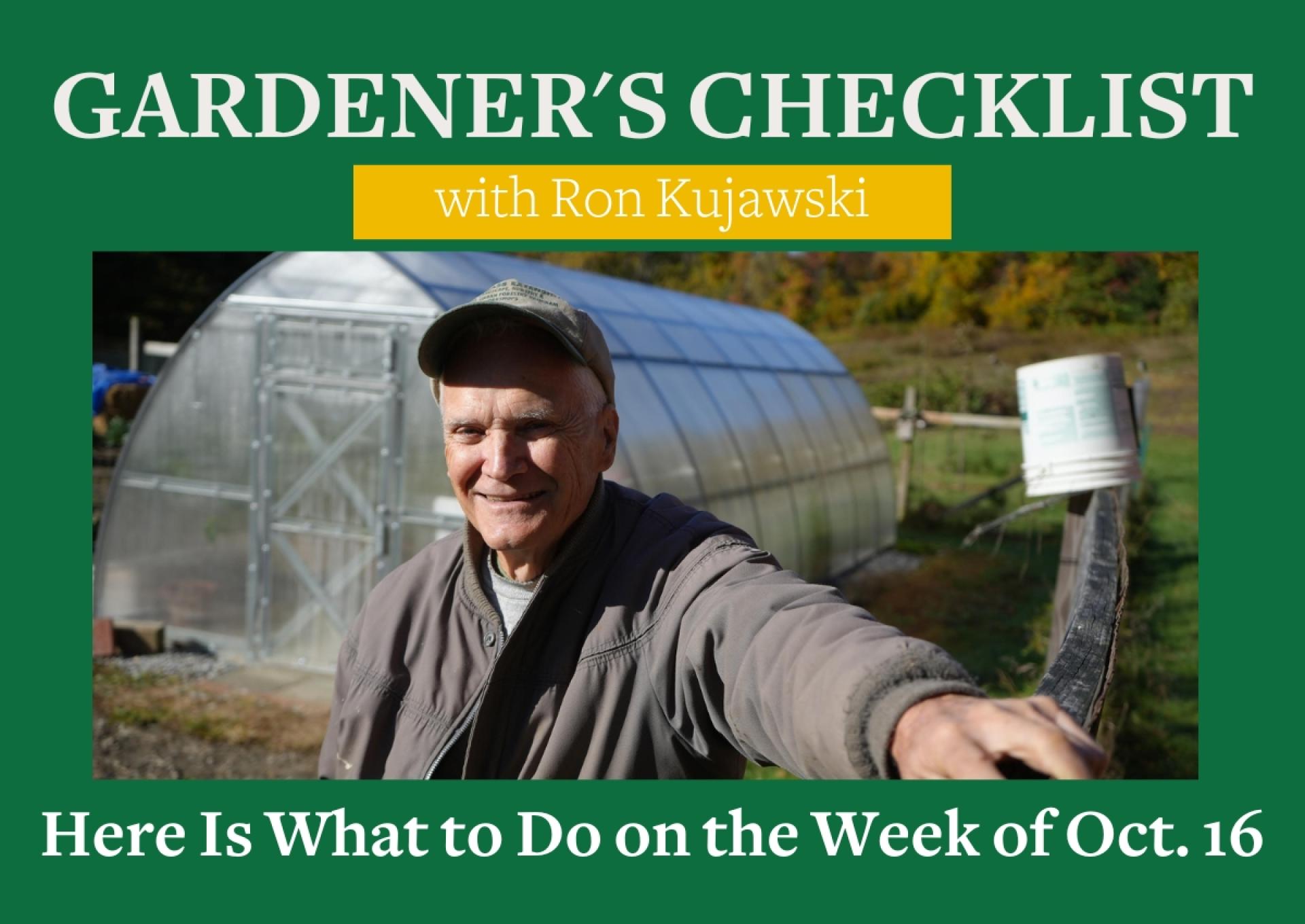You are here
Gardeners Checklist: Here is What To Do the Week of October 16
Gardeners Checklist: Here is What To Do the Week of October 16
By Ron Kujawski
• Be aware that leaves of flowering cabbage and flowering kale, often described in gardening literature as being edible, should not be eaten if the plants have been marketed as a non-food crop. That’s because the plants labeled as such are often treated with a growth regulator to keep the plant stems from elongating. If you have grown your own plants from seed, there is no problem with eating the leaves though the raw leaves may be a bit bitter. However, since they are planted for their ornamental value, why would you want to eat these last bastions of color in the fall garden?
• Build a bin for composting tree leaves and plant debris from flower and vegetable gardens. A quick bin can be made by nailing together wooden pallets – that is, if you can find used pallets. Otherwise, do what I do: simply heap your garden debris into a mound in an out of the way spot in the backyard – or front yard if you want to show off your environmental commitment.
• Remove any herbaceous perennials that were grown in patio pots and transplant these to the flower garden. Rudbeckia ‘Denver Daisy’, a hybrid of our native black-eyed Susan, is one example of perennials that can be grown in containers, e.g., a window box, through summer and then transplanted to the garden at this time of year. This variety begins blooming in late July and remains in bloom well into autumn. It will be a great addition to your perennial garden.
• Pay attention to poorly growing house plants. Those looking worried are probably pot-bound. Remove the plants from their pots and if the roots appear as an entangled mesh all around the soil ball gently tease them apart and replant in pots at least two inches larger in top diameter.
• Save the seeds after slaughtering – uh, carving up – your pumpkins for Halloween or for pumpkin pie. Wash the seeds to remove any surrounding pulp and let them dry. The dry seeds can be tossed in olive oil, placed on a cookie sheet or shallow roasting pan, and then roasted in the oven at 350 degrees F for about 15 minutes. My wife will often season the seeds with sea salt, or chili powder, or curry, or all of the above before roasting. The seeds are high in protein, vitamins and minerals.
While on the subject of pumpkins, plan to use pumpkins and winter squash soon if they’ve been exposed to a hard frost. The definition of “hard frost” varies depending upon whom you ask. A meteorologist will give you a definition that’ll leave you scratching your head. On the other hand, some gardening sources say if the air temperature drops below 28 degrees F for a few hours there is a hard frost. Others say that a hard frost is when air and ground temperatures drop below freezing, i.e., 32℉. Frankly, from a practical point of view, it seems to me that if it’s been cold enough to kill plant stems and leaves there’s been a hard frost. Therefore, if your pumpkins and squash were still in the garden when frost killed the vines, they’ve been exposed to a hard frost. While damage to the vines from a hard frost is obvious, the same cannot be said for the fruit. The outward appearance of pumpkins and squash may look unaffected but their interior may have suffered chilling injury which damaged plant cells. In time, this injury will lead to rotting of the fruit. So, should your pumpkins be exposed to frost, use them soon afterwards.
on Kujawski began gardening at an early age on his family's onion farm in upstate New York. Although now retired, he spent most of his career teaching at the UMass Extension Service. He serves on Berkshire Botanical Garden’s Horticulture Advisory Committee. His book, Week-by-Week Vegetable Gardener’s Handbook, is available here.
Help Our Garden Grow!
Your donation helps us to educate and inspire visitors of all ages on the art and science of gardening and the preservation of our environment.
All Donations are 100 percent tax deductible.



